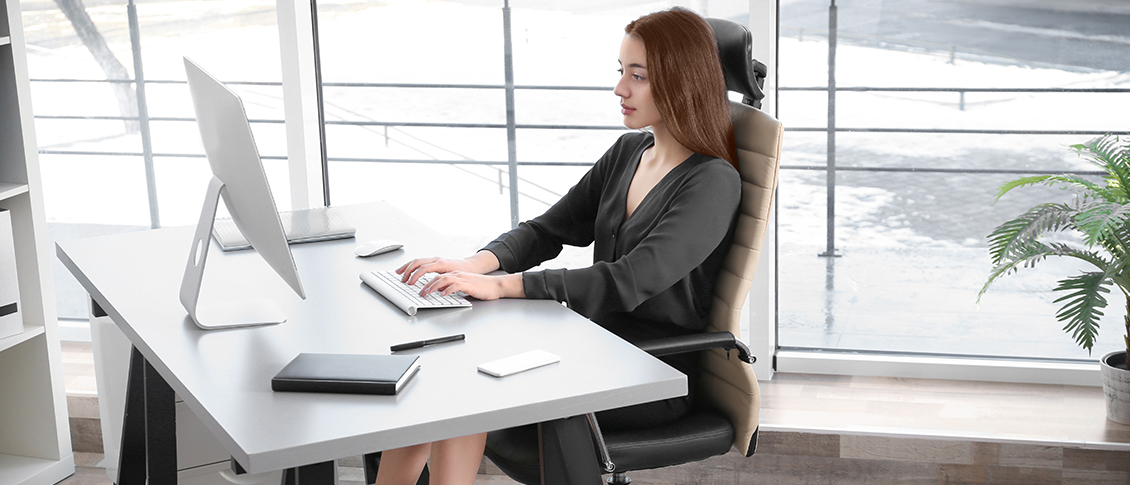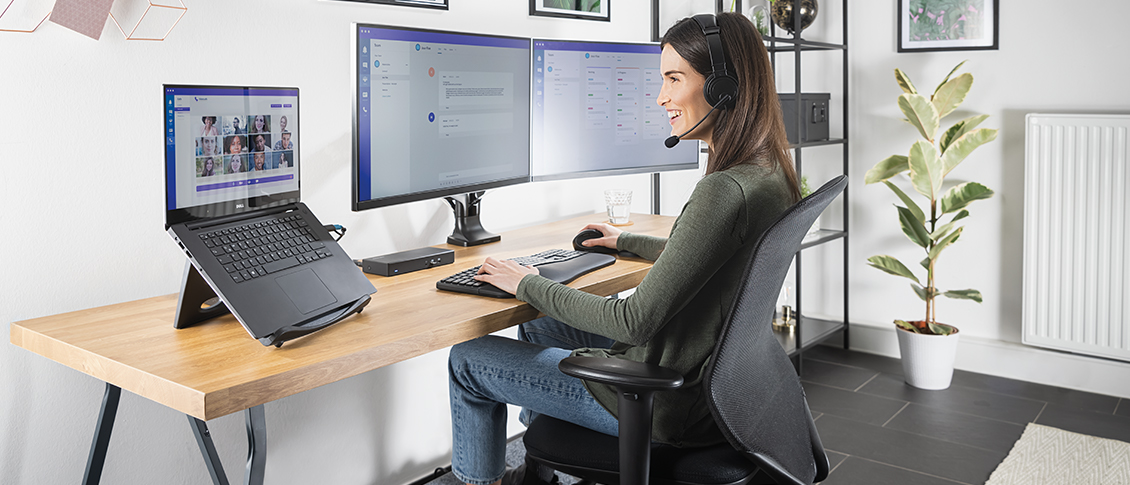Why Do I Suffer with Back Pain Working from Home?
17.06.2021

Working from home has its advantages. Better work life balance, zero commute, and wearing comfortable clothes. There’s really no place like home, right?
With more and more business recognising the benefits of remote working for employees, staying at home has become the ‘new normal’. However, not all of us are sitting comfortably. Aches and pains have become a common complaint from workers, with back, neck, and shoulder soreness topping the list of gripes.
The issue is many of us don’t have an adequate work setup. Furthermore, many employees have taken to working from their sofas or beds with their laptops. This not only negatively affects efficiency, but posture too. Whilst many workers have tried to adapt their home workspaces to be more comfortable the measures do not match up to the desks, chairs, and accessories of the many abandoned offices. The temptation to put in extra hours has no doubt had an impact on our physical wellbeing too.
Below, we reveal some of the most common aches and pains associated with working from home and provide solutions to reduce back pain.
Common working from home injuries
Back issues are one of the most prevalent injuries obtained whilst working from home. However, they are not the only pain that many employees live with. Carpal tunnel syndrome is one of the most common conditions, particularly for those who use computers daily. It causes pain, numbness, and tingling due to repeated actions. The best way to avoid this is to always have your keyboard placed directly in front of you and use a keyboard wrist rest and accompanying adjustable mouse pad.
Computer elbow, also known more commonly as tennis elbow, is when pain develops in your joints due to overuse. The muscles and tendons in your arm can become injured by the constant reaching and retraction from mouse to keyboard. An elbow brace can be helpful but ultimately you will need to reduce the activity or reposition your equipment.
The last common grievance many employees express is hip pain. Our bodies are not naturally meant to be bent at the hip 90-degrees for long periods of time. This can result in tight hip flexors which can also exacerbate back pain too. A natural seated position that is slightly reclined and open will alleviate this discomfort. Though this can be difficult without an appropriate chair.

How to improve posture working from home
It can be all to tempting to hunker down on the sofa or crawl into bed and work from your laptop. However, this is not giving your back the correct support for a day of work. One of the most important elements of your home working setup to consider is your office chair. A fully adjustable chair where you can manipulate the height, back position, and tilt is best. You will want to ensure that your knees sit lower than your hips and your forearms are perpendicular to the floor, with your elbow at 90 degrees.
Although many people naturally cross their legs when they sit, try to refrain from doing so. This can account for neck, shoulder, and back pain as your body is off balance. Ideally your feet should lay flat on the floor – you can use an adjustable footrest to make this easier if required.
To complete your posture-friendly setup, how you position your screen is important. Whether you have a desktop or a laptop, the screen should be an arm’s length away, with the top of the screen at eye level.
What are the best office chairs for back pain?
Do you miss your workplace office chair? No doubt you will have finely tuned it to suit your body positioning and you will have worked daily without any aches or pains. Buying a new office chair can be difficult when there are so many on the market, but you will save yourself money in the long run by not needing to see a chiropractor.
Before you invest in any old office chair, you will want to make sure it meets certain criteria that will improve your posture and reduce any spinal pressure.
1. Adjustability
As we previously mentioned, having a chair that allows you to change the height, back positioning, and tilt is key. Your body is different to that of your colleagues, so having a customisable office chair means you can adjust it to your frame.
2. Easy rolling
This isn’t for whizzing around your home office. You will need a chair that you can roll easily into a position that is comfortable for both your legs and your arms when using the keyboard and mouse. Having to strain or stretch whilst working will only increase the likelihood of damage to your back, neck, and shoulders.
3. Brand reputation
The right office chair allows you to position your body so that you do not trigger back pain. You can be planted in your office chair for hours of the day so investing in a model from a well-known brand that comes with warranty demonstrates the company’s confidence in providing you with a chair suited to your needs.

Mesh vs traditional office chairs
Once you’ve found a selection of office chairs that suit your needs, you will likely see that that each model is made a little differently. Most office chairs on the market are available with a mesh material finish or a more traditional look, such as leather, fabric or vinyl.
Fabric chairs are adopted by offices worldwide. They’re affordable, comfortable, and easy to maintain. Most fabric chairs have all the features needed to customise for your body and some even have added lumbar support.
On the other hand, leather office chairs are expensive and tend to be bulkier. They are a professional statement, but they will need looking after. If you have your heart set on a leather office chair, make sure you shop around, some leather models are fixed, meaning they don’t have the adjustable capabilities of their fabric and mesh counterparts.
Mesh chairs have become popular in recent years. Whilst they aren’t as durable, the mesh material conforms to the contours of your body whilst providing adequate support. They’re also readily available, inexpensive and offer ventilation – perfect for summer months when home offices can get hot.
If you want to improve your posture when working from home it’s important to pay close attention to your setup. The equipment and tools you use will likely account for any aches and pains you are suffering with. However, if you’re still struggling after adopting some of the methods in our article, it may be wise to visit your GP. After all, you can’t work efficiently if you’re in pain, wellbeing is key.